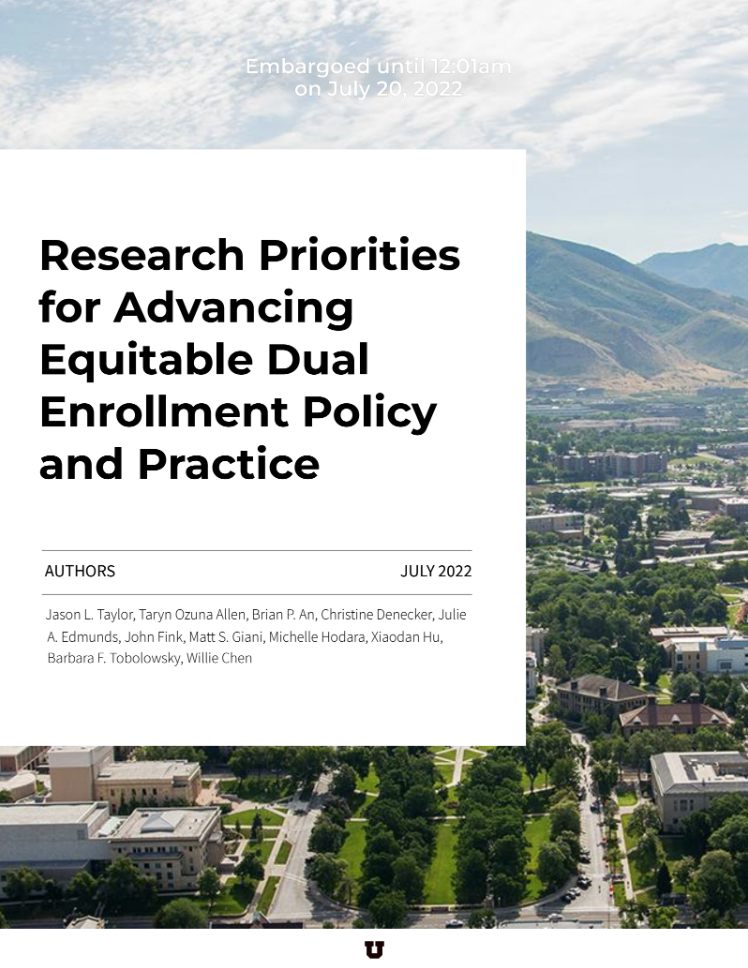Research Priorities for Advancing Equitable Dual Enrollment Policy and Practice
Author(s): Jason L. Taylor, Taryn Ozuna Allen, Brian P. An, Christine Denecker, Julie A. Edmunds, John Fink, Matt S. Giani, Michelle Hodara, Xiaodan Hu, Barbara F. Tobolowsky, Willie Chen
Publisher: University of Utah
Year: 2022
Description
At a time of declining postsecondary enrollments due to the COVID-19 pandemic, it is essential that education practitioners, policymakers, and researchers deploy every effective tool and strategy to get high school students back on the pathway toward a postsecondary degree or credential and a good-paying career. One key tool in that toolkit is the opportunity for students to take college courses while in high school through programs like dual enrollment, concurrent enrollment, and early college high school.
The research is clear: dual enrollment is an evidence-based practice that has broad
positive impacts on student outcomes,
including college enrollment and completion. It is prevalent nationwide, and widely
supported by students, parents, and
education policymakers and practitioners. If implemented thoughtfully, intentionally,
and equitably, the benefits to students’ college and career pathways can be significant.

